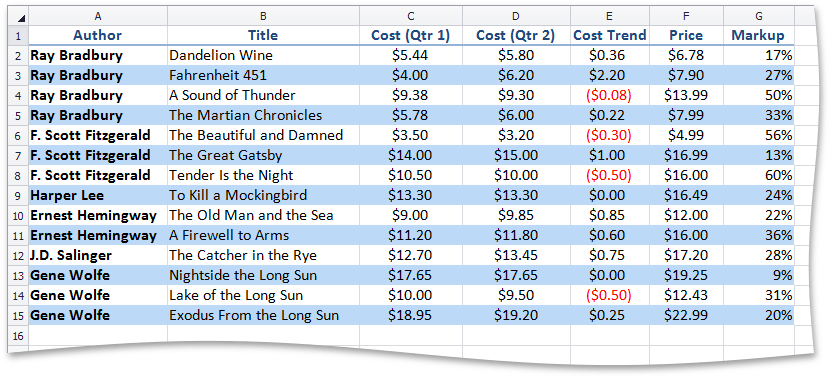How to: Use a Formula to Determine which Cells to Format
- 2 minutes to read
This example demonstrates how to create the rule that uses a formula as a criterion to apply a conditional format.
To create a new conditional formatting rule represented by the FormulaExpressionConditionalFormatting object, access the collection of conditional formats from the Worksheet.ConditionalFormattings property and call the ConditionalFormattingCollection.AddFormulaExpressionConditionalFormatting method. Pass the following parameters:
- A Range object that defines a range of cells to which the rule is applied.
- A string value that determines a formula to evaluate.
- Specify formatting options to be applied to cells if the condition is true, using the ISupportsFormatting.Formatting property of the FormulaExpressionConditionalFormatting object.
To remove the FormulaExpressionConditionalFormatting object, use the ConditionalFormattingCollection.Remove, ConditionalFormattingCollection.RemoveAt or ConditionalFormattingCollection.Clear methods.
Note
A complete sample project is available at https://github.com/DevExpress-Examples/how-to-apply-conditional-formatting-to-a-range-of-cells-e4929
// Create the rule to shade alternate rows without applying a new style.
FormulaExpressionConditionalFormatting cfRule = worksheet.ConditionalFormattings.AddFormulaExpressionConditionalFormatting(worksheet.Range["$A$2:$G$15"], "=MOD(ROW(),2)=1");
// Specify formatting options to be applied to cells if the condition is true.
// Set the background color to light blue.
cfRule.Formatting.Fill.BackgroundColor = Color.FromArgb(255, 0xBC, 0xDA, 0xF7);
The image below shows the result. Alternate rows are shaded in light blue without applying a new style.
